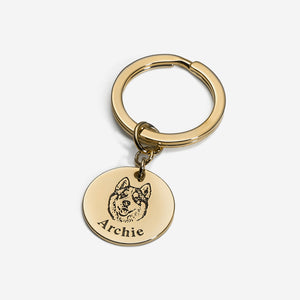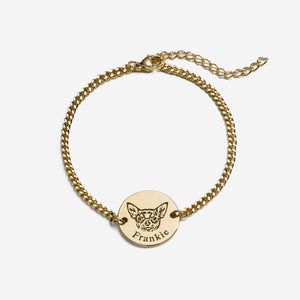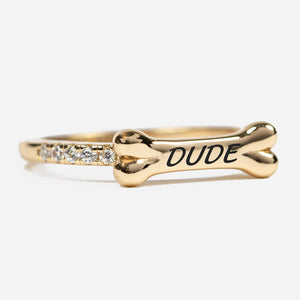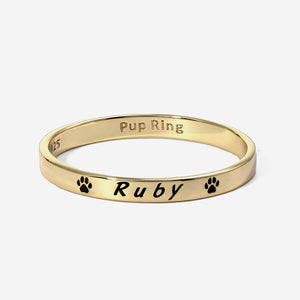Has there ever been a time that you wished you could teach your dog a new skill? Of course you have! Maybe you searched for hours on an article that would teach you exactly how to train your dog. Maybe they made it sound too simple and the steps you tried didn’t work. Or maybe it was way too complicated to understand every step.
I’ve talked about learning new tricks before, like the “place” command, or performing tricks in a box. If you look at any new trick you might want to teach your dog, you can actually break it down into the same ideas and steps. If you learn how to use Shaping to teach your dog a new skill, the possibilities for any other tricks are endless!
What is Shaping?
“Shaping” is a term dog trainers use to describe this method of training. At its core, it is teaching your dog something new by waiting for a desired behaviour, and rewarding every step it takes in the right direction to the desired skill.
A lot of dog owners aren’t aware that the commands they try to teach their dogs aren’t as clear as they think. Someone teaching “sit” might say to you- all my dog has to do is sit down! While that is true, that the act of sitting is simple, a dog doesn’t simply suddenly understand the word just because we say it louder when it doesn’t happen. It’s just noise.
Learning to communicate with your dog is the core to any training. Dogs are excited to work and please us, because that’s what they have been bred to do for thousands of years. If you think of it that way, then it makes a lot more sense that good communication is the key to unlocking the world of dog training.
 Here's a simple example of Shaping you might use to teach your dog "sit". Think of every micro-shift that happens in the process of sitting down.
Here's a simple example of Shaping you might use to teach your dog "sit". Think of every micro-shift that happens in the process of sitting down.- Your dog is standing in a neutral position.
- Your dog begins to shift its weight.
- Their hind legs begin to bend back into the sitting position.
- Their front legs might step back to help balance in the sitting position
- Your dog finishes sitting on the floor.
- (optional) You may wish to wait for your dog to be in a more “relaxed” sitting position to signal it won’t hop right back up, so you may watch for another shift of weight for that signal of settling into the sit.
This is a bit more of a simplified example. Teaching a dog to sit is probably one of the easiest things to learn, but even this can be broken down into a series of steps that, if your dog was confused, you could reward them for meeting each of the different steps (which we’ll call “Criteria” from here on out).
Additionally, you can make it even easier by setting up your training session to help your dog naturally. For the sit example, you’ll want to make sure you are in a good space for your dog to naturally be comfortable sitting. You may try holding a treat in front of your dog, and doing a slight lift and moving-back motion so that the dog sits on its own while its nose is following the treat. You can also try taking a small step closer to your dog, where it will naturally move out of your way by either taking a step backward, or sitting down.
You will also need a clear “Marker” to help you with timing. Most professional dog trainers use something called a clicker, which just makes a clear “clicking” sound when pressed and is designed to be a pleasant noise, followed by a treat. You can also have a very clear, enunciated word for your Marker. If you only use treats, in the time it takes you to pull out the treat, give it to the dog, and for the dog to eat it, it may make it unclear to your dog what precise action produced the reward.
Whatever marker you use, it should be as clear and exact as possible. Remember, the clearer your communication with your dog, the better your training session will be. Also, don’t worry about confusing your dog by interrupting their actions- by building a strong connection between each step, you’re letting them know they are going in the right direction and should keep going with it.
Shaping in action- Learning the “Place” command

Let’s talk about an example I’ve mentioned before: the “Place” command. “Place” can be extremely useful for a lot of things, like making sure your dog behaves when someone comes up to the door, letting your dog know they should go relax on their own while you do something, or even bringing the object you use for “Place” anywhere you go, for an obedient, well-behaved dog wherever you go! Here are the criteria you might come up with for your dog for learning, and how you might help them along through the learning process:
Before you begin, you need to choose an object for your dog to consistently use- Ideally it will be something comfortable that your dog is willing to lay on for a period of time, and it is able to be easily picked up or moved around so you can take this command anywhere. Once you have your object chosen and ready, you can start! (For the purpose of making the example clearer, I’ll use a mat as your object.
1. Glance at the mat
Throughout this process, your main focus will be to build a strong positive association between your dog and the mat. You may be surprised that this starts just by waiting for your dog to give the slightest glance at the mat. Hold it up, or drop it on the floor. Any time your dog’s eyes focus on the mat, use your marker the exact moment that they do, and immediately follow up with a treat.
2. Long look
Next you want to watch for your dog to become increasingly interested in the mat, so you will want to watch for your dog to look at it for longer, sniff it, or even touch it. Continue to mark and reward every action of interest you see from your dog!
3. Touch (nose, paw)
Next, you can raise the bar a bit by making the criteria your dog meets strictly be touching the mat. A nose or a paw touching the mat is perfect, or any other contact they may make.
4. Walk over it
This requirement is that your dog must place at least one paw one the mat. Nose boops no longer count! Make sure that this change is gradual rather than just watching your dog meet the previous step a few times. Remember that you’re building up the idea of “Place” rather than expecting your dog to know exactly what you want right away.
5. Stand on it (stand, sit, lay- all good for place)
Now you want to wait for your dog to put weight on the map- pokes don’t count anymore! Any time your dog puts weight on the mat, mark and reward! You can encourage this a bit more by moving around a bit so your dog doesn’t stay in one place. Just make sure you don’t get too crazy and break your dog’s focus on the fact that they are learning something new.
6. Stay for a short time
Finally, you want to encourage your dog to stay on the mat for a period of time. You can continue giving treats any time the dog steps on it, but keep giving random treats for staying without any kind of command.
By the way, if you leave the mat out between sessions, and you notice your dog standing, sitting, or laying on it, you can randomly give it a treat to continue reinforcing the behavior. Being a little bit random with your rewards also builds up extra excitement and interest in your dog, so be sure to take advantage of that bit of doggy psychology! The whole point is to help them enjoy being on the mat all on their own, so don’t give any command when you’re giving a random good-behavior reinforcement.
You may be wondering- When do you add a word for this behaviour? It is actually best to add the “Cue”, or your command, when your dog has a strong understanding of what it is doing. That way your dog isn’t ever confused about what the word means, and the command will be rock-solid.
Tips and Tricks

If your dog gets stuck or confused at any point, you can do something to give them a hint. Try to avoid just repeating random words, and don’t get upset or angry with your dog, that will just distract them and stress them out. For example, if you are still struggling to get your dog to look at the mat, you can pick it up and drop it a few times so your dog instinctively looks at it.
If your dog is failing to meet the criteria you’re setting, it probably means you’re moving too quickly. Since Shaping happens when you reward your dog for trying something on their own, expecting them to take big steps in the right direction isn’t realistic. That’s why we break everything down into such tiny steps- and helps your dog feel confident that they can figure out problems on their own!
Whenever you start a new training session, make sure to practice with something your dog was already doing really well on to reinforce the behaviour and so your dog is on the right path to continue learning the new trick. By doing this, you are setting them up for success, which is instrumental in having a solid, productive training session.
If your dog gets off the mat before you want them to, don’t make a huge fuss over it. Don’t repeat your command to get them back on- that may make your dog think “Place” just means to go touch the mat. Rather than continually telling your dog to go on the mat, start using your release command (for me, it’s a very clear and slightly peppy “Ok!”). Using your release command is what really lets your dog know this trick happens over a period of time, not just as a standalone action.
Make sure that any trick you teach is practiced in a variety of settings (of course, after your dog already has a good idea of what’s going on.) Dogs can often be a bit confused if you try an old trick in a new setting, because there may be more distractions and the situation that they’re in has changed. Of course, once you’ve practiced in a few different places, your dog will really get the idea that “Place” always means they go to the mat to hang out, no matter where that mat is.
The best sessions usually only go for about 15 minutes. When you train your dog, you want the session to be interesting and you want your dog’s focus. It’s important to train your dog in an environment that has very few distractions. But if your dog is on the distractible or easily bored side, you may want to make them shorter. This is all about setting them up for success, and if they start making a lot of mistakes, you both may get confused or frustrated. You should also make sure that it’s a good time for you- if you aren’t focused on the training, you can’t expect your dog to be either.
Have a release command. This makes it clear to your dog that there is a difference between doing a trick, and sustaining a command for a period of time. It’s the difference between just performing the action of sitting, and sitting for a period of time. This will be really useful in other scenarios too.
Here are some other tricks you might want to try:

- Ride a Skateboard (A lot like teaching place, but by using a skateboard instead of a mat, and helping your dog learn to balance)
- Stand on hind legs
- Get a drink from the fridge (careful with this one if you have a mischievous pup- they might really enjoy helping themselves to last night's lasagna!)
- Play Soccer
- Surf
So what do you think? What trick would you like to teach your dog using Shaping? You can let us know by responding to this week’s newsletter or e-mailing us at support@pupring.com! Maybe you'll get lucky and I'll write an article all about your trick! Thanks for reading, and I’m looking forward to hearing from you!







